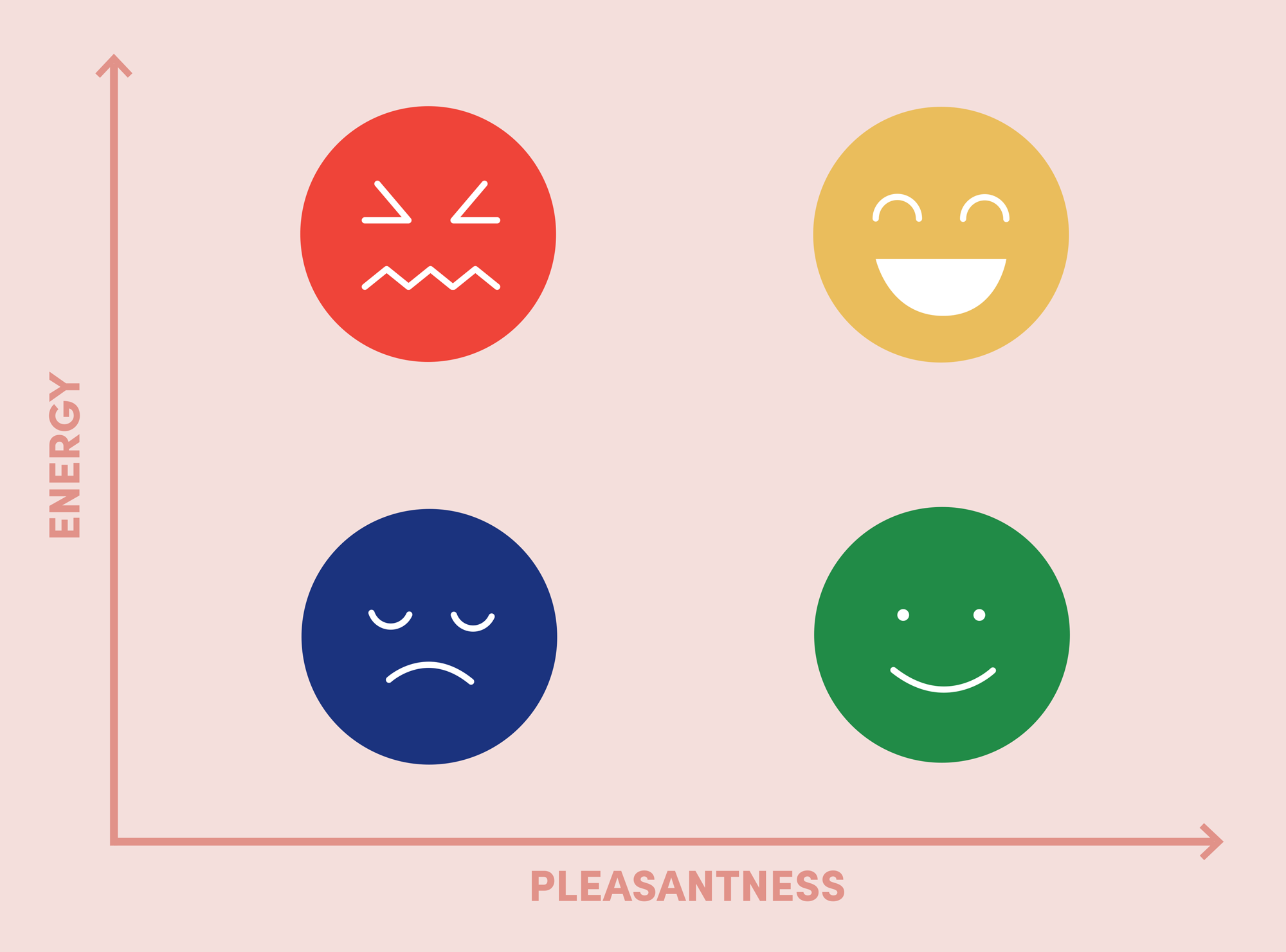It’s been a long day. A good day, but a long one. And I’m tired.
So, how am I feeling?
Green.
That is, on the Mood Meter developed by the Yale Center for Emotional Intelligence, I’d put myself in the lower-right quadrant, where emotions that are low-energy and positive are color-coded green.
Earlier in the day, right after my morning coffee, I was feeling…yellow: high-energy and very positive about the meetings I’d scheduled and a lecture I was preparing to give to incoming students at my university.
Of course, four categories does not do justice to the many kinds of emotions each of us experiences in a lifetime, or even in a single day. There are nuanced differences between feeling serene versus satisfied (both green), or furious versus frightened (both red, high-energy, and negative).
But when you’re a rookie at emotional intelligence, the four quadrants defined by energy (high or low) and valence (positive or negative) are a great way to begin to recognize how you’re feeling from moment to moment.
Where are you on the learning curve of emotional intelligence? How many of the following statements are true today, and in what area would you most like to improve?
I notice how I am feeling and think about why I feel that way.
I look at others’ facial expressions and body language to know
how they are feeling.
I generally understand what causes my feelings.
I have a wide and specific vocabulary for talking about my feelings.
I am comfortable expressing my feelings, both pleasant and unpleasant ones.
I have a lot of different strategies for handling my feelings.
This year, young people across the country and around the globe will spend hundreds of hours honing their academic skills. But in most schools, they will spend exactly zero instructional hours engaged in the mastery of emotional intelligence.
To me, that’s a shame. Nobody is born knowing everything there is to know about how to understand their feelings and use them wisely. And, like any skill, emotional intelligence can be learned, practiced, and improved. Most important, there is a rigorous scientific literature on emotions that helps us do that.
For parents…
Try getting educated about emotional intelligence—for your own benefit and to be an intentional role model for your children.
For educators…
Try Yale’s RULER curriculum, developed to help students of all ages recognize, understand, label, express, and regulate their emotions.
Because all of us, whether we’re Jedi masters of emotional intelligence or just getting acquainted with our feelings, have a lot to learn.
With grit and gratitude,
Angela


